#a house went on the market in my target area 45 minutes ago
Text
.
#a house went on the market in my target area 45 minutes ago#and it is like 2/3ds what im looking for? but very charming!#being sold as-is which is HMMMMM#and im gonna go see it tomorrow#but its so close to where i work that it would be a ten minute walk instead of an hour drive each morning and thats HUGE#also WAY under my budget which again HMMMMMM#but! little white picket fence! brick 1920s construction!#aaaaaaaaaaaaaaaaaaaaaaaaaaaaaaaaaa
421 notes
·
View notes
Text
Salvador, Brazil
The day I left Brasilia for Salvador marked five weeks in Brazil (and fourteen of the past seventeen spent on the road). I was losing steam. Constantly packing and unpacking, always being a guest in someone else’s apartment, being alone nearly all the time, stifled by high temperatures and humidity and, I think more than anything else, not being able to speak the language were all taking a toll. I wanted to make the most of my time in Salvador, which everyone told me is a special place I would love, but I also started counting the days until I would be home.
In fact I was lucky to make it out of Brasilia at all. Months earlier I booked a flight on the budget airline Avianca. A few weeks before the flight they emailed me about a change, but the email only showed a different flight number. When I checked on the flight a few days ahead of time, I discovered my original flight had been canceled, and I had been rebooked on to an itinerary with a layover. At least it only added an hour of travel time, and I may have been lucky. It turns out Avianca was teetering on bankruptcy and had canceled 2,000 flights in the last two weeks of April since they were unable to pay the leases on their planes and airport slots. That might explain why on the first leg of my flight we were served only water and muffins and on the second leg the flight attendants didn’t even come through the aisle (tho it was only 45 minutes). They seemed pretty unhappy in general.
My Uber ride to the city was a bit surreal. When I planned this trip I forgot about Holy Week, and I arrived on Good Friday, a national holiday. I thought that Easter in a Catholic country might include some unusual parades or festivals, but it turns out most people go home to their families that weekend. So as I drove through the city in the middle of a Friday afternoon it was eerily quiet and deserted. I was already nervous since many people had warned me to be careful since crime was rife (even more so than everywhere else in Brazil). And I knew the area I was staying in, Centro, could be dicey, especially at night, but it sounds like everywhere in Salvador is dicey so there weren’t any great options. In any event, the crumbling buildings, stray dogs, abundant trash, closed shops and streets mostly devoid of people (except some layabouts) all added to my sense of unease.
I was staying on a public square, Largo Dois de Julho, which hosts a number of businesses, so that felt reassuring. Most were closed but I did find a couple open restaurants. I was scared of venturing further, and I didn’t want to take an Uber to a restaurant only to discover it was closed for the holiday, so I stayed close to home my first Friday night. Fortunately just two blocks away was Bar Ancora do Marujo, a truly tragic drag show dive. Bizarrely the show started with “Bye Bye Birdie”, and I must have been the only person to recognize it in the mostly young, entirely Brazilian crowd. I appreciated the obscurity but the show did not improve. I spent most of the night chatting with a friendly guy and his drunken friend who talked a lot of shit (especially about Argentinians).
On Saturday it felt like some life had been restored to the city. I was tired from lack of sleep, humid heat and homesicknesses, but was determined to press on. I headed south on (I think) the city’s main thoroughfare, Sete de Septembre. Centro soon passed into Vittoria, a much nicer (i.e. wealthier) neighborhood with lovely tree-canopied streets. There was not much to look at besides walled-off high-rises and the occasional colonial mansion. The road eventually dipped down into Barra, the city’s most popular beach. The coastline is dotted with numerous outcroppings, and Barra is marked by three forts, one still in use, one in a state of glamorous decay and one that has been restored into the Museu Nautico da Bahia, famed for its lighthouse, the Farol da Barra. The street above the beach has been made pedestrian-only and that afternoon the whole area was full of sunbathers, vendors and on-lookers like me.
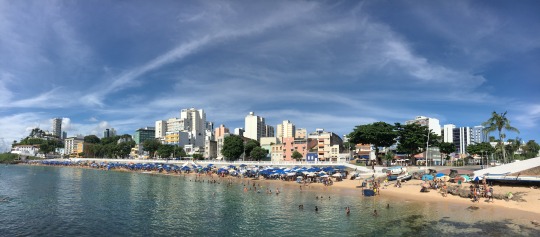

Taking in the views, I meandered my way over to the museum, a history of Bahia’s relationship to the sea, full of historical displays (presented in English too!), curious artifacts and ship models. (It also exhibits some of the remnants of a famous shipwreck that was only salvaged about fifteen years ago.) I’m not a maritime aficionado, but still found all of it interesting. I especially enjoyed the restored fortress that houses the museum and lighthouse (which you can climb to the top of) as well as the fabulous views they offer.
There is not much else to do in Barra, so I bought some beer and acaraje and sat on the beach for a while. I later repositioned myself to the bay side for sunset. Salvador sits at the mouth of the very large Todos Os Santos Bay, whose mouth opens south on to the Atlantic ocean. The city is on the east side of the mouth, which makes it the only place in Brazil where you can watch the sunset on the “ocean” (actually it’s setting over the bay and behind Ilha De Itaparica, a large island, but the effect is the same). After soaking in the beautiful sunset, I left the increasingly revelrous crowds to buy some groceries and go home for an early, restful night.

Sunday was Easter, and I did not know what to expect, except that most businesses would be closed. After a leisurely start, I walked down to the waterfront and over to the Mercado Modelo, once a Customs House that stored slaves awaiting auction, now a large marketplace full of stalls selling touristy tchotchkes. I breezed through then crossed the street to the famed Elevador Lacerda, a couple Art Deco towers holding four elevators that whisk passengers from the waterfront up the hill to the Pelourinho neighborhood, for just R$0.15 (US$0.04) a ride. I really don’t understand why this is such a big deal, even highly recommended by Lonely Planet. Yes it serves a helpful function, and the views from the lookout at the top are magnificent. But inside it’s just a metal elevator with no windows. The top of the structure juts out of the cliffside but its views are spoiled by tiny window frames and dirty glass. I’m glad the elevator was there so I didn’t have to walk, but it’s hardly an attraction in itself.

Pelourinho is Salvador’s most famous, tourist-friendly neighborhood. I was planning to spend Monday there (figuring more places would be open and fewer tourists would be about), but I figured I would get a sneak peek the day before. It’s also full of churches, so I thought I might catch some Easter celebrations but alas I did not. After a tasty lunch at Bar Zulu (my first salad in ages), I visited two of the local churches, side-by-side and competing for opulence. The first was Igreja da Ordem Terceira Secular de Sao Francisco. Bucking the national trend, the exterior is extremely ornate while the interior is (relatively) subdued. Visitors can tour the rest of the complex, which includes a creepy crypt and some deeply disturbing portrayals of Jesus suffering. Not to be outdone, next door is the Igreja e Convento de Sao Francisco, a decadent Rococo stunner covered in gilded embellishments and Portuguese tiles (tho its exterior is a fairly modest Neoclassical facade). I decided to save the rest of Pelourinho for the next day, so after snapping a few more pics in the light of the setting sun, I headed back down the hill to my apartment (before it got dark and scary).


What a difference a (working) day makes. When I looked out my window Monday morning, the city seemed to have returned to normal. My AirBnB was on Largo Dois de Julho, and it was bustling with shops and street vendors, and the streets were densely packed with shoppers and pedestrians. I made my way up the hill back to Pelourinho. It’s a very charming, pretty area of narrow cobblestone streets, scenic plazas, historic churches and small colonial-era homes, mostly restored in the last twenty years. It encompasses several paradoxes that made it hard for me to settle on my feelings toward the place.
The word Pelourinho translates as “pillory” (”a wooden framework with holes for the head and hands, in which an offender was imprisoned and exposed to public abuse” aka the stocks). And indeed slaves were often publicly punished in the area, which is nowadays postcard-perfect and full of tourists and street performers. It was the historical center of town, and its wealth was driven by the slave trade. When slavery was banished and penniless slaves were set free in Salvador, the city went into decline as the money left. It is now a poor, often dangerous city, and Pelourinho was not “rediscovered” and cleaned up for tourists until the 1990s. Yet none of this history is visible anywhere, and slavery is only mentioned in the context of the slave church (more on that below).
My first impression of the neighborhood was that it was now pandering to tourists and had lost its character, like a post-Guiliani Times Square. But it’s more nuanced than that. For one, its character before was poor and decrepit, so it has certainly improved even if that meant losing some elements. Also there are many locals there as well. They come for the cultural spaces, performance venues and bars (tho the restaurants seem distinctly touristy). Many work in the area as was clear at lunchtime. And a few steps away will lead you to streets that look like any other, with markets, consumer goods stores, etc. that cater only to locals.
Some of the locals, however, are there just for the tourists. Pick-pocketing and panhandling are rife, and everybody is looking for a way to get your money, legitimately or otherwise. As a tall, very white guy with red hair, I felt like I had a target on my back. Every time I entered the area, I was ambushed. Some asked for money, some tried to shove some ribbons into my hand (they are a local religious emblem) so that I would buy them, some showed me their displays of trinkets and some offered food. It was nerve-wracking having random strangers lunge at me constantly or make a beeline across the street for me, especially knowing how frequent muggings are in Salvador. It’s exhausting saying “Obrigado nao” all the time. And most of these people will not accept the first “Nao” so they aggressively keep demanding, which then makes me worry how they are going to react. I quickly learned not to stand still, not to let anyone engage me in conversation and not to sit at a street-side table at a restaurant. These measures only lessen the number of encounters, and they hardly make for a pleasurable visit. (And this happens all over the city-- one of the street kids who hangs around the plaza in front of my AirBnB told me that “tourists have money”-- but Pelourinho is the most touristed area so it is most prevalent there.)
So it’s a beautiful, historic neighborhood, well-restored but white-washed, that almost looks like a section of Disneyland but which locals continue to embrace and frequent and where I enjoyed walking around but was relentlessly accosted. I have conflicting feelings about it all, but in the end, it’s still a beautiful, fun, important area that shouldn’t be missed. Pelourinho centers around four plazas, ringed by multiple churches. I began at Praca de Se, whose 400 year-old cathedral was actually torn down in 1933 and which nowadays has little to offer (except a fountain and some fenced-off remnants of the cathedral’s foundation). Next to it is Terreiro de Jesus, the biggest square that is home to the Catedral Basilica, an elegant, only-slightly-overwrought Jesuit church from the 1600s. The plaza itself looks like a wonderful gathering point for all types, but unfortunately it was walled off for construction.
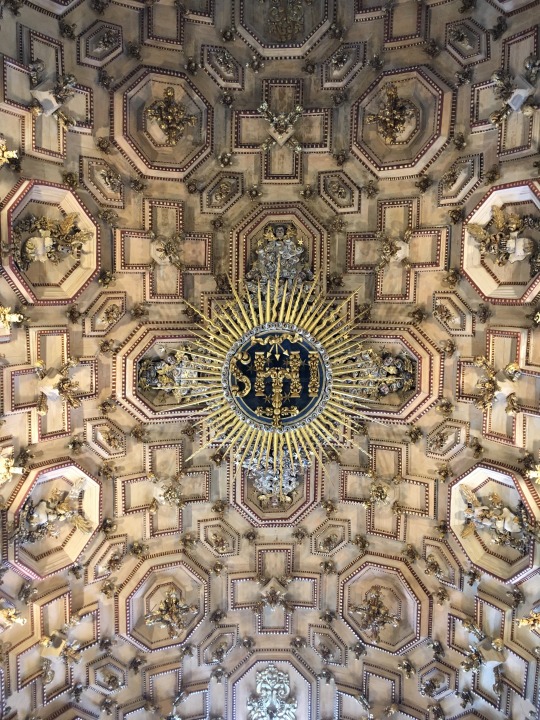
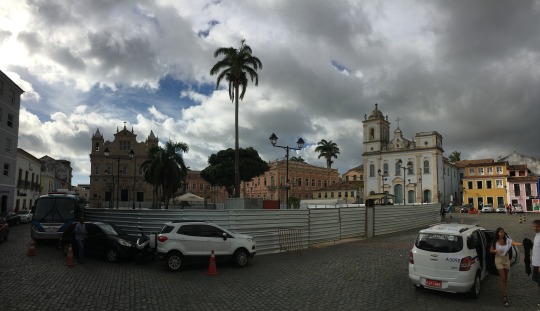
I explored some of the side streets which are full of restaurants and tourist shops and made my over to Largo do Pelourinho whose slope, triangular shape and colorful old buildings make it the perfect spot for photographs. At the base of the square is the sky blue Igreja Nossa Senhora do Rosairo dos Pretos, a church built by slaves (in their spare time) over the entire 18th century (on land granted by the King of Portugal). The interior does not match the facade’s beauty, but its significance to the black population for 300 years makes it an interesting stop.
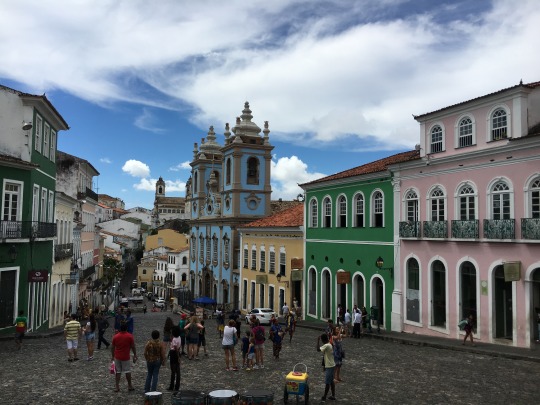
The road then continues uphill into the Carmo neighborhood, which looks similar but slightly less cute. The defining structure there is the Igreja da Ordem Terceira do Carmo, a massive church and former convent atop the hill. It too is less impressive inside tho it does offer some magnificent city views. The street continues into the Santo Antonio neighborhood which is still more run down but in a decidedly hip fashion. It is now being reclaimed by small pousadas (inns), restaurants, music stores, boutiques, etc. So far they seem to be succeeding at restoring the area and adding to its character without sacrificing its authenticity. One advantage, as I found when I stopped for a coffee at Cafelier, is that the buildings on the west side of the street are perched high on the hill so they enjoy sweeping bay views.



I wandering back to Largo Terreiro de Jesus for my last stop at the Museu Afro-Brasileiro, which is housed in the fantastic pink colonial Faculdade de Medicina building. The museum started with eight artifacts in 1972 and has since acquired an important collection of items linking African and Brazilian cultures. It is much smaller than its counterpart in Sao Paulo, but that makes it easier to focus and understand the exhibits. The undisputed highlights are the 27 stunning carved wood panels by the artist Carybe, one for each of the deities of the local Candomble religion. Feeling much better about Salvador, I walked back home for a quiet Monday night.
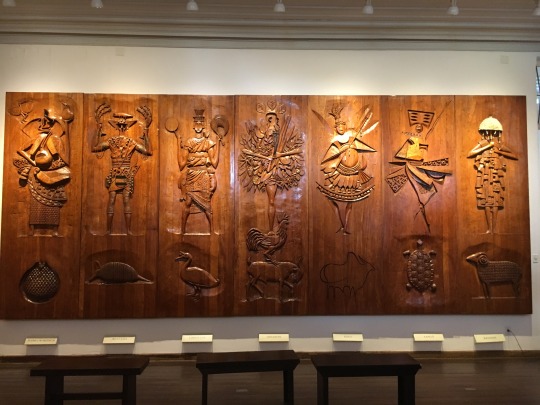
It was raining Tuesday morning so I started late. My first stop was the Museu de Arte Moderna housed in Solar do Unhao, a well-preserved former sugar mill and transfer station. The “museum” was underwhelming. The one exhibit occupied just one room plus a small side room with a video installation (it looked like there was an upstairs that was closed). The featured artist’s works examine colonialism’s enduring impacts. Some of the paintings were quite captivating, and nearly all had large gashes meant to resemble open wounds, which was very unsettling (as I’m sure she intended). With little to see, I did not stay long and, after walking around the marina only to discover the only restaurants were seriously over-priced, I took a car up to the Itapagipe Penninsula.
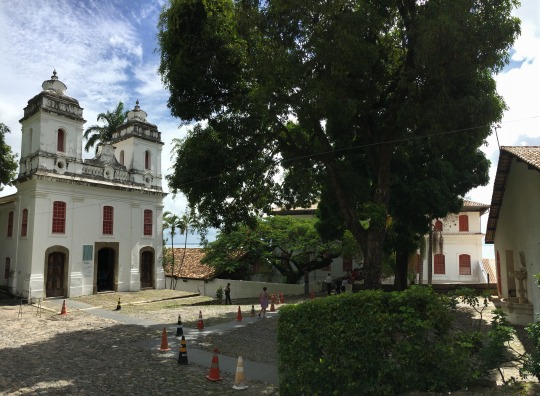
The main attraction here is the Igreja Nossa Senhora do Bonfim, the origin of the colorful ribbons that people are always trying to get me to buy. Apparently the Senhora effects miracle cures, and those ribbons grant wishes. I was pleased to see the plaza in front was undergoing a well-executed makeover that makes it a very pleasant place to hang out. Unfortunately the construction inside was still in progress so the entire altar was blocked off while the workers’ loud clangs and bangs diminished the overall effect. It’s not a particularly pretty church anyway. The only part that interested me was the Sala dos Milagres where people leave photos and even wax replicas of body parts to request cures or give thanks for successful ones. Hundreds of detached limbs hang from the ceiling. But other than that the church really is not worth the journey unless you’re very superstitious religious.

From the church I started walking west toward the bay. None of my guidebooks mentioned it, but I happened to read somewhere that a nearby lookout point offered some great views. After 20 minutes of walking I reached the coast and yet another old fort, Forte de Monte Serrat. The attempted military museum inside was falling apart, but the views around the fort were indeed fantastic. Looking to the south I saw a very serene, almost empty beach and to the north a number of small fishing boats and kids playing in the water. It struck me that this must be Salvador at its best. I walked along the beach a little then back up to the fishing area which is an outcropping called Ponta do Humaita. There is not much there: an old church (of course), a long pier, a little lighthouse and what appear to be some old military buildings. But there were kids diving in the water, locals chatting and drinking beer at the small restaurant and a few other tourists checking out the views. It’s a really nice spot, far removed from grit and/or tourist centers of the rest of the city.

That evening I headed back to Pelourinho since Lonely Planet said it comes alive on Tuesday nights after mass. There were a good number of people about, one especially crowded bar, a live band and some drumming groups, tho it did not seem like this was unusual. Still it was fun to see the area at night and sit outside eating dinner watching the band in the Cruzeiro de Sao Francisco square. I walked around a bit and ordered a large beer from the bar. But of course standing outside drinking invited the usual assault from people wanting things from me (some even asking for a sip of beer). I relented with one guy and let him tie one of those stupid ribbons on my wrist (which I realized made me look even more a target). I only had a 20 so I asked for 15 back (which I think is still pretty generous). He went to get change then came back and put a crumpled bill and more ribbons in my hand-- of course it was only 10. Another guy witnessed this and tried to do the same thing, and when I refused him, he insisted he had AIDS. Federal police from the military stand guard everywhere, but like the restaurant staffers, they do nothing to try to curb the begging. This was all too much so I went home, frustrated that I couldn’t enjoy a nice evening in the city’s prettiest area.
On Wednesday I surprised myself by waking up early to join a boat tour of the Todos Os Santos bay. It’s a large, beautiful bay with 56 islands which are mostly cloistered close to land. As a solo traveler my only option was to join a large boat with dozens of other travelers. That is not my style at all but I hoped it would be worth it. The vessel, the “Maria Mulata” (!), was full with about sixty people, but it was comfortable enough. It took 1.5 hours to reach our first stop, so in the meantime, the crew passed around fresh fruit and caipirinhas, and a jovial three-man band played music. One of my fears was that I would be pressed into small-talk with strangers all day, but it turns out that I was the only English speaker aboard so I barely talked to anyone (which grew tedious). Most passengers were Brazilians along with a few Argentinians (a standard tourist mix here). The band were working hard to create a festive atmosphere, so there was a lot of encouragement to clap and sing along. I’ve never cared for this kind of enforced enjoyment so I just smiled and tapped my feet. But sticking out as I do, the band leader quickly signaled me out and had me get up and do a silly synchronized arm waving dance. I at least showed them I have some swagger in my hips, and everyone seemed really nice so I didn’t mind. The journey was tough tho because it was all in Portuguese, and I would repeatedly get drawn into interactions where all I could do was smile and say, “Sim!”

We finally reached Ilha dos Frades, a beautiful tropical nature preserve. I walked around the small accessible section, through the tiny village which was oddly buzzing with lots of construction, up to the cute little church on the hill and then down to the beach for some beer, swimming and relaxing. It was all quite nice.

After a couple hours we got back on the boat. Halfway across the bay, we encountered some engine trouble (ah... Brazil) and just sat and swayed in the waves while the band tried to keep everyone’s spirits up. After 20-30 minutes another tour boat came along and tugged us to the next stop, Ilha de Itaparica, the bay’s biggest island. There was no dock here so we had to transfer to small speed boats that carried us to shore. This stop was for lunch at a lovely restaurant/resort, but the beach in front of it was not nice at all. We did not stay long tho and soon were being ferried back to a new, bigger boat. This operation took a long time since I think we had merged with another group or two. By the time we started moving, it was getting close to sunset so we headed right back to Salvador. I think there was supposed to be another stop at a nicer beach but clearly we had run out of time. This was very frustrating, but none of the staff seemed to acknowledge it or apologize or offer some compensation, like free drinks on board. At least the ride back during sunset was wonderfully beautiful, but the tour was disappointing overall. I figured we spent just three of the eight hours on the islands. As lovely as that lunch was, they need to find a new spot that is more accessible and has a nicer beach so we could have spent the whole afternoon there.
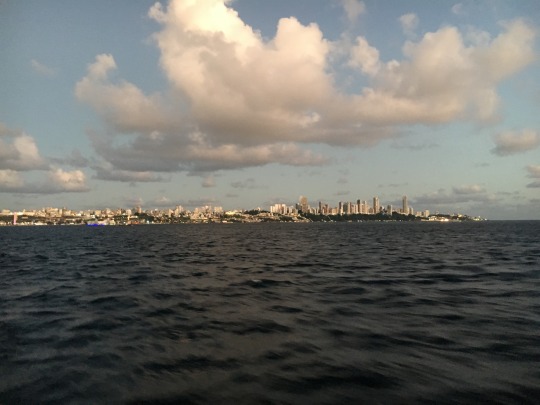
That night I did something I almost never do: I followed The New York Times’ travel advice. I find their “36 Hours” pieces pretentious and aimed at their readers’ narcissistic desires to have a more “authentic” vacation than everyone else. They tend to ignore the things most tourists enjoy and to recommend expensive restaurants and out-of-the way spots so that their readers can feel like they’re doing something special and unique. But there is not a lot for tourists to do in Salvador and (as the NYT acknowledges) much of the city is too dangerous for tourists to explore. So I thought I would try out some of the recommendations from their article in January. Yes, they have some expensive suggestions and steer you to some far-off places, but to their credit, they start in Pelourinho, admitting that despite the tourism and aggressive tourist hunters there, it’s still the nicest part of town. And they were right about the restaurant where I ate Wednesday night, Mistura Perfeita. It’s near the center and looks like every other hole in the wall here with plastic tables and chairs setup out front, but they serve incredible lambretas (clams cooked in an oniony broth) and delicious caipirinhas in a a wide variety of exotic fruit flavors. And they get extra points for being the only restaurant I visited where the staff actively shoed away beggars from the outside diners. (Still, the NYT couldn’t help itself: it praises the Mouraria neighborhood as “gloriously not prettied up for visitors”, as if the writer were foolish enough to walk around the area at 8:30p when they claimed to be there.)
By Thursday I had run out of things to do so I stayed in all day and caught up on this blog. That evening I headed to Rio Vermhelo, a seaside area up the coast from Barra that’s know for its nightlife (and was also recommended by the NYT). It’s a 20-30 minute drive from the center, and it feels very apart. It’s much newer, cleaner and safer than the rest of Salvador with far fewer street people but it lacks the Afro-ness the city is known for. It’s a nice, pretty area and the only place I’ve felt entirely safe and comfortable walking around. But it feels like it could be any coastal neighborhood in Brazil or anywhere else for that matter. For locals I imagine it’s a nice escape. The focal points (besides the beach) are several plazas lined with interchangeable restaurants and countless vendors (mostly selling acaraje or tapioca). Several hosted live music. I was disappointed at how generic the restaurants are-- they’re essentially the same as all the others around the city but newer-- until I realized that Salvadoreans like generic restaurants. They just want to sit outside with their friends sharing beer and snacks, so it doesn’t matter where those come from. They like the familiar and comfortable, and I get that. As I explored the area a little more I discovered it also has some hipper, more discreet bars with DJs, live music and younger crowds (more like American bars). All in all it seems like a cool area and probably the best place for tourists to stay, despite-- or because of-- its distance from the center. Also, for the (newspaper of) record, NYT got Rio Vermelho all wrong. They recommended a bar that serves weird, sugary shot concoctions and the least interesting, most touristy plaza. Take that “36 Hours”.
Friday was another day with nothing to do (except counting the hours until my flight home). I took the Elevador down to Comerico, the waterfront neighborhood below Pelourinho. It’s one of the city’s original neighborhoods and I guess it is still the commercial center, tho it was hardly bustling. It’s full of beautiful old buildings which have mostly been left to rot. Some have masked their decay with fresh paint; others are fabulously deteriorated like ancient ruins. It’s quite a sight, especially juxtaposed with the more modern office buildings that have sprung up among them.
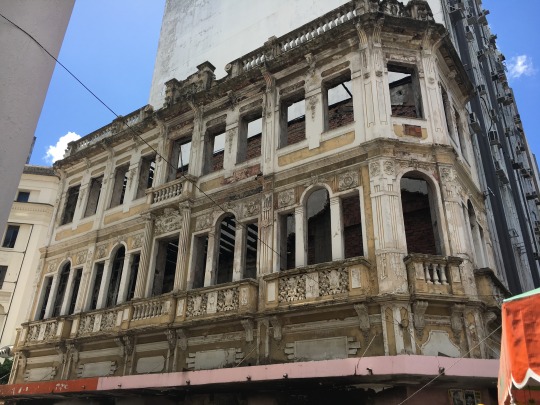
That evening I packed excitedly, well ready to be home. And then, somewhat unexpectedly, my last night turned out to be pretty special. I had planned to go back to Santo Antonio to Forte da Capoeira since I thought there would be a capoeira show there. But when I looked out my window, I saw the building across the street was hosting an event with drummers and dancers, so I went to check it out. It appeared to be the closing night party for a symposium on African culture in Bahia. And right in front was a group of 8-16 year-olds putting on a capoeira show. Obviously they were novices (although some had good moves) but I caught the gist, and the kids looked like they were having a really good time. I also enjoyed the variety of people that passed by to watch for a few minutes, particularly the grandmother with her baby granddaughter who loved playing with some trans women’s dogs. Dois de Julho is a gritty area but a colorful, diverse, tolerant one (like San Francisco’s Tenderloin).
Later, for the first time in Brazil, I went out to a gay club. I resisted before since I knew it would mostly be me standing around, watching, unable to talk with anyone. And that’s pretty much how it happened, but I’m still glad I went. Everyone was enjoying themselves (and others...), and it was fun and interesting to note the similarities and differences to bars back home. Then it was back to my AirBnB to sleep one last night in Brazil.
It took me a while to warm up to Salvador. Everyone said the same three things about it: one, you’re going to love it; two, it’s different from the rest of Brazil and more African; and three, be careful it’s really dangerous. When I heard this from Brazilians, I sometimes suspected two and three were code for “poor and black.” From what people had told me, I half-expected to see women carrying jugs on their heads, donkey-drawn carts jostling with cars while chickens scurried out of the way, muggers lurking in every doorway and nonstop singing, dancing and drumming. These are quarter-truths at best. Salvador is unmistakably Brazilian in its look and feel, tho many people sport more African-looking styles and behave more forwardly and loudly. While the city’s general state of disrepair shows its age, it is actively building and modernizing. Crime rates are high here, but I exercised common sense and did not encounter any problems. (There are a LOT of homeless and beggars, and they can be quite aggressive and demanding, but this is a far cry from mugging.) And while I did hear a lot of music (and firecrackers) around the city, most of it was coming out of speakers not street corner performers.
My timing was unfortunate, visiting at the fatigued end of my trip and starting on a quiet holiday weekend. Not only was the city duller than usual, the emptiness exaggerated my fears for my safety. But as the city normalized during the week and really picked up on Friday night, I started to see all its wonderful qualities and appreciate its color and vitality. Still it was hard to ignore the city’s drawbacks. Every time I went outside, I was targeted by beggars, scammers, vendors and anyone else who wants a dollar, and many of them were extremely difficult and unpleasant. When I can’t just sit outside and enjoy a beer without being harassed, it severely curtails my enjoyment of a place. Safety concerns also kept me from exploring most of the city or walking around at night, which are my favorite things to do when traveling. In Brasilia I couldn’t walk by design, in Salvador by decline.
And finally, beyond safety concerns, it’s not an easy city to be a tourist. There is not much to do (especially if you don’t care for the beach). It’s difficult-to-impossible to find information online, and when you do it’s often incorrect-- even the tourism agencies don’t have websites. (In fact I’m writing this in an otherwise very nice, contemporary, “American-style” cafe that requires a Facebook account to get on their WiFi which I do not have.) And Bahians, like much of the rest of Brazilians, do not seem to care much for outsiders. To Salvador’s credit, I saw improvement works projects all over the city-- several of them impeding my tourism-- so they are working on making it a nicer, easier place (at least the tourist areas). However I suspect it will take them decades to undo the decline of the past hundred years, and it would take a significant shift in culture and crime rates before tourists really feel welcome.
Salvador reminded me in some ways of Philadelphia, where I went to college 20 years go. Proud, defensive Philadelphians were well aware of the generally negative view of their city, and they were quick to remind me that it was the nation’s first capital. (To which I responded that New York was the second, but they seem to have moved on.) Salvador’s motto is “First Capital of Brazil” (the second capital, Rio, also seems to have moved on). Like Philadelphia, its glory days are behind it, and the city seems to be slowly decaying with pockets of revitalization. But I think that’s how the people there like it; it’s part of the city’s unique character and culture. Ultimately I am undecided on Salvador. I did not love it as much as everyone told me I would; its qualities are largely counterbalanced by its drawbacks. And I think that’s just how the locals want it.
0 notes
Link
Three killed and 11 injured in shooting at Christmas market Injured terror suspect identified as Cherif C remains on the run Police raided suspect's home on morning of the attack Attacker armed with an automatic pistol and knife A suspected terrorist is on the run after killing at least three people and injuring 11 more in the eastern French city of Strasbourg near its Christmas market. Around 350 people, including police, troops and helicopters were on the heels of the attacker who had "sowed terror" in the city, Interior Minister Christophe Castaner said. French authorities are treating the shooting as a terrorist act after identifying the gunman, named Cherif C, as a radicalised 29-year old from the city on a “S” security and terror watch list. Anti-terrorist prosecutors have opened an investigation. Questions were being raised over how the assailant had managed to evade capture on Tuesday morning. Police were due to arrest him over a botched armed robbery but he had escaped and grenades were found at his home. He was being investigated over an attempted murder, a source told AFP. Hours later, shortly before 8pm, the assailant went on the rampage in Strasbourg’s city centre in the bustling rue des Ofrèvres armed with an automatic pistol and knife. Police reported the attacker was shot and wounded by patrolling soliders before he fled the scene. According to France Info, the wounded suspect took a taxi driver hostage to escape soldiers. The driver reportedly escaped unharmed. Cherif C, the Strasbourg terror suspect Credit: Twitter "The government has raised its security threat to the highest level and is bolstering border controls," Mr Castaner told a late-night news conference. "We will also reinforce security at all Christmas markets to prevent copycat attacks." Mr Castaner said the suspect has an existing criminal record. The mayor of Strasbourg, Roland Ries, said the gunman got inside a security zone of the Christmas market to stage the attack. More than seven hours after the bloodshed, the regional prefect said that 11 other people had been injured, five seriously, downgrading the minister's earlier count of 12 injured. Theresa May said she was "shocked and saddened" by the "terrible" attack in Strasbourg. She tweeted: "My thoughts are with all of those affected and with the French people." Terrified residents and tourists sought cover in bars and restaurants and footage on social media showed at least one victim lying on the ground as others screamed. At least two of the wounded were said to be in a critical condition. The gunman was wounded by soldiers on patrol as part of France’s Sentinelle anti-terror operation but managed to flee, said police. One of the soldiers was wounded in the hand in the exchange. A local man named Philippe told Europe 1 radio: “I saw a person on the ground, unconscious and bleeding. There was another person on the ground just behind, and one or two more a bit further along the street.” Strasbourg shooting map One eyewitness, who tried unsuccessfully to resuscitate a Thai tourist shot by the gunman, said: “I though it was just firecrackers but it turned out to be actual gunshots. “I saw one person lying there, a tourist from Thailand accompanied by his wife or girlfriend was unhurt. We tried resuscitation efforts for 45 minutes. We dragged him into a restaurant close by and we tried our best to bring him back to life with CPR but it seemed that that was futile.” The European Parliament was in lockdown, with MEPs, staff and journalists unable to leave the building, a few kilometres from the square. Caught in drama was Sajjad Karim, the British MEP who survived the 2008 Mumbai terror attack in which 174 died by hiding in the basement. He said: “I am in the EP completely safe and unable to leave at present. It’s an unfolding situation: and my thoughts are with the victims.” Thoughts with victims in #Strasbourg shootings - I am safe and in @Europarl_EN— Sajjad Karim MEP Conservative (@SHKMEP) December 11, 2018 Richard Corbett, a Labour MEP, tweeted that he was in a restaurant in the centre of Strasbourg, adding: “Restaurant locked and not letting anyone in or out.” Jean-Claude Juncker, president of the European Commission, said: “Our thoughts are with the victims of the Strasbourg shooting which I condemn with great firmness. Strasbourg is par excellence a town that symbolises peace and European democracy.” Across the city centre people were ordered to stay put, with some 5000 spectators still being held at a basketball game at 1am local time. Spectators who were trapped at the SIG Strasbourg basketball game reportedly began singing the French national anthem "to pay homage to the victims of the shootings". They eventually were allowed to leave, with those with nowhere to go housed at a gymnasium, the prefect tweeted. The Interior Minister announced that protests would be banned on Wednesday in order for police to be "mobilised completely". Police officers secure a street and the surrounding area after a shooting in Strasbourg Credit: VINCENT KESSLER/Reuters French MPs at the National Assembly expressed their solidarity and the Senate held a minute’s silence. President Emmanuel Macron held a crisis meeting with cabinet officials in Paris shortly after midnight. Francois de Rugy, the French ecology minister, tweeted: “Solidarity and support for the people of Strasbourg. Our support too for the security forces. We are united and determined to protect the French people.” But some already started criticising Mr Macron’s security credentials. “How many terror attacks by those on “S” watchlist do we have to suffer before adapting our law to the fight against terrorism. What are we waiting for to finally wage war to eradicate Islamic fundamentalism that has declared war on us?”, asked Laurent Wauquiez, the Right-wing Republicans party leader. Far-Right leader Marine Le Pen said: “A radical change must happen as terrorism policy is clearly failing.” French police say several people have been injured in the city centre Credit: petervdalen/Twitter France remained on high alert after a wave of attacks commissioned or inspired by Islamic State militants since early 2015, in which about 240 people have been killed. Fears of terror strikes had waned in recent months. Instead, the country has been more concerned about an ongoing nationwide “yellow vest” revolt as protesters call for lower taxes and higher wages. However, four “radicalised” men were arrested at the start of the revolt in early November and charged with plotting to carry out a terror attack during the first “yellow vest” protest. A hunting rifle was found and police said there was evidence they were trying to acquire a Kalashnikov. Christmas markets have been considered a terror target ever since the foiled terror attack in December 2000. The al-Qaeda plot, in which a truck bomb was due to be detonated beneath the steps of Strasbourg cathedral, next to the market, has been described as blueprint for would-be attackers. The plot failed when British intelligence tipped off the French and German authorities after intercepting a call to the suspected paymaster in London. Raids in France, Germany and Britain followed and the ring leaders were arrested in Frankfurt, where bomb making materials were found. Security was stepped up at Christmas markets across Europe two years ago when a stolen lorry was driven into pedestrians in Berlin, killing 11 pedestrians and injuring 56. Some two million people attend the Strasbourg Christmas market every year. Roland Ries, the mayor of Strasbourg, said the Christmas market will be closed on Wednesday and flags will be lowered to half-mast. He tweeted: "A book of condolences will be opened at the Town Hall from today. "I want to thank the people of Strasbourg and visitors to the city for their patience and understanding. "A discussion is under way with the education authorities about possible closures to schools on Wednesday." 10:50PM May 'shocked' by Strasbourg shootings Prime Minister Theresa May has said she is "shocked and saddened" by the "terrible" attack in Strasbourg. Mrs May tweeted: "My thoughts are with all of those affected and with the French people." Shocked and saddened by the terrible attack in Strasbourg. My thoughts are with all of those affected and with the French people.— Theresa May (@theresa_may) December 11, 2018 10:37PM More from the ground in Strasbourg A student, Glenn Essoly, says she has sought refuge with other people in a library. “We don’t know how long we’ll have to stay here. We’re hoping it won’t be all night. We really hope it will be over soon but we don’t have any information.” A waiter from a restaurant near the scene of the shooting described on BFM TV how staff and customers tried to save a man who stepped outside and was shot in the head. “We used napkins to try to stem the blood,” he said. He said the man had died. 10:23PM Reports of a second suspect According to Strasbourg town hall, another operation is taking place at Place Broglie. "There is a strong suspicion that a second person" may be implicated in the shooting, police sources told Le Figaro. 10:15PM Attacker's date of birth released French media have given the attacker’s date of birth - 4 February 1989 - but officials have yet to release a name. 10:13PM Border checks strengthened With the attacker still on the run, the French and German authorities have strengthened checks on the border, which is near Strasbourg. 10:06PM Witnesses describe seeing multiple victims Alain Moyemont, a witness, told BFM TV: “I saw people in the crowd running in panic after the shooting started. At least two people were on the ground.” Philippe, a local resident, told Europe 1 radio: “I saw a person on the ground, unconscious and bleeding. There was another person on the ground just behind, and one or two more a bit further along the street.” 9:56PM 'European Parliament will not be intimidated' President of the European Parliament, Antonio Tajani tweeted a message of condolence and defiance against the attacker. I express all my sorrow for the victims of the Strasbourg attacks. This Parliament will not be intimidated by terrorist or criminal attacks. Let us move on. We will continue to work and react strengthened by freedom and democracy against terrorist violence.— Antonio Tajani (@EP_President) December 11, 2018 9:49PM Grenade found at attacker's home Police raided the attacker’s home this morning in connection with another case, and found at least one grenade, BFM TV reports 9:48PM French terror attacks The Strasbourg attack is the latest in a string of recent terror attacks in France. In August 2017, a BMW 2-Series Active Tourer was driven into a group of soldiers in a suburb of Paris. Six people were injured, three seriously. The driver was then stopped on the A16 motorway, being shot several times in the process. That June, a Renault Megane containing explosives and weapons was driven into a Gendarmerie vehicle on the Champs-Élysées in Paris . Only the attacker was killed in what is understood to be a 'botched' suicide attack. In July 2016, a lorry was driven into crowds celebrating Bastille Day near the seafront in Nice killing. 87 people, including the attacker, and injuring a further 458. 9:28PM Shooter born in Strasbourg The Strasbourg attacker is said to be aged 29 and Strasbourg-born, but now name has been disclosed. According to BFM TV, the attacker is on the “S” file terror watch list. The man was identified thanks to security footage, according to Le Parisien. 9:10PM Soldiers wounded attacker The attacker was wounded by soldiers before fleeing, police say. The soldiers who wounded the attacker were on patrol in Strasbourg as part of the “Sentinel” anti-terrorism operation. Armed soldiers and police have been patrolling the streets of French cities since the 2015 Paris attacks. 9:07PM Shooting being treated as terror attack Authorities say they are treating the attack as a terrorist act. Anti-terrorist prosecutors have opened an investigation. 8:53PM Death toll rises to two Two people are now reported dead and 11 injured, with at least two in critical condition after the attack. 8:51PM Emergency phone line The French authorities have set up an emergency line for people with relatives or friends who may have been caught up in the attack . It is: 00-33- (0)811 000 667. 8:45PM Attacker identified The attacker, who is "on the run”, has been identified, the Prefecture says, but it has not made the name public. Police continue to hunt for the attacker. 8:29PM Macron informed on Strasbourg latest The office of Emmanuel Macron says the President is being kept informed of unfolding events in Strasbourg as the Interior Minister travels to the scene. Police secure a street and the surrounding area after a shooting in Strasbourg Credit: VINCENT KESSLER/Reuters 8:25PM Attacker on the run The regional state prefecture has confirmed that an attacker is "on the run". 8:22PM Fire brigade increases number of injured The local fire brigade have reported one person dead and nine injured. The motive for the shooting and the identities of the attackers are still unknown. 8:17PM Residents told to stay inside The French Interior Minister is advising residents of the eastern city to stay indoors as more details begin to emerge on the shooting incident. 8:15PM European Parliament on lockdown A contact at the European Parliament in Strasbourg has told the Telegraph that all EU staff and MEPs have been locked inside the building. "We ask you to stay calm and stay safe within EP premises," read a message to staff.
from Yahoo News - Latest News & Headlines https://ift.tt/2LbfIWh
0 notes